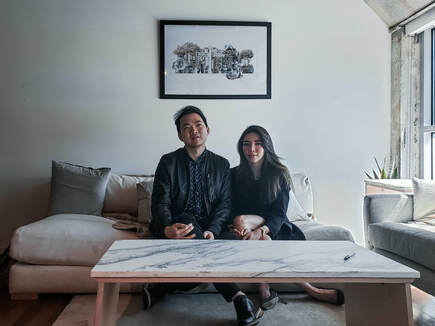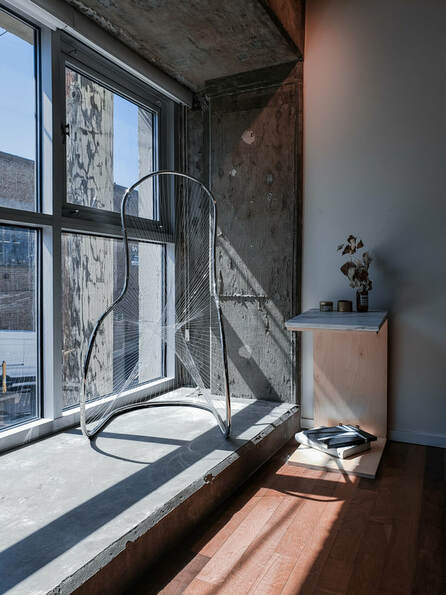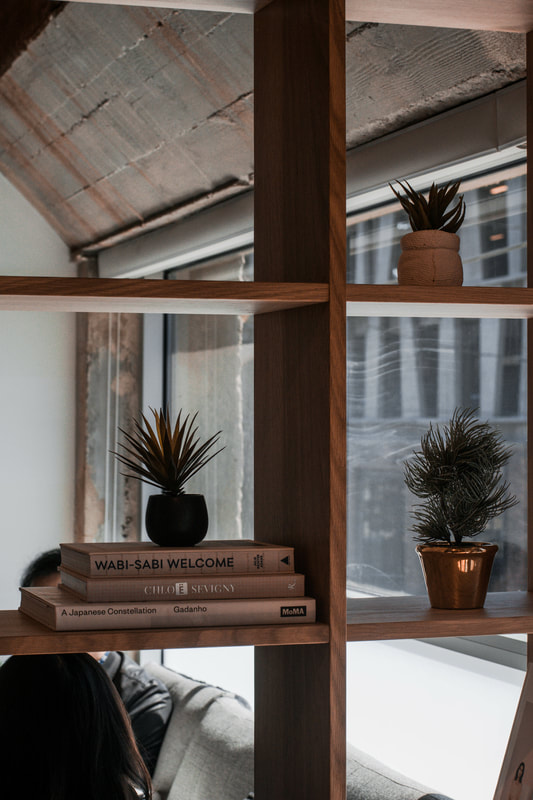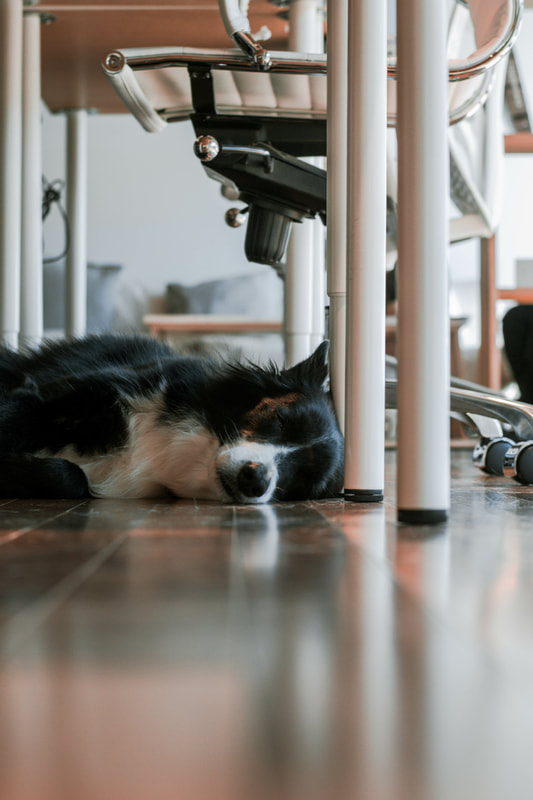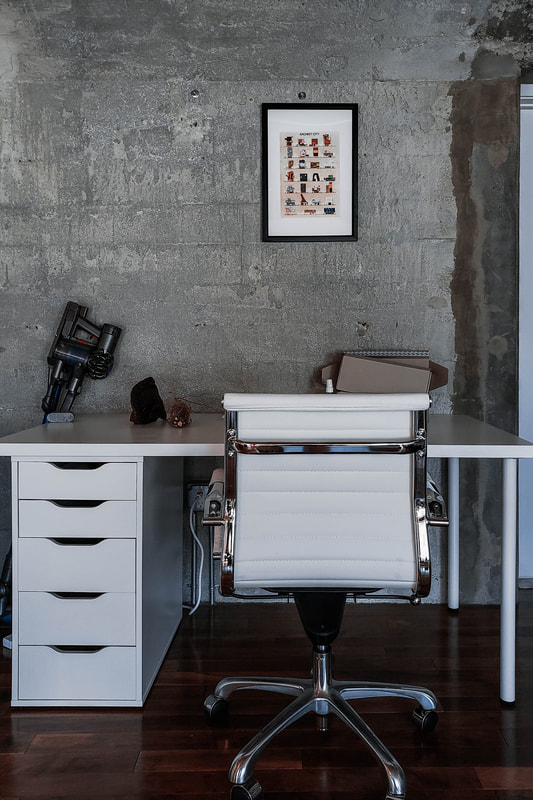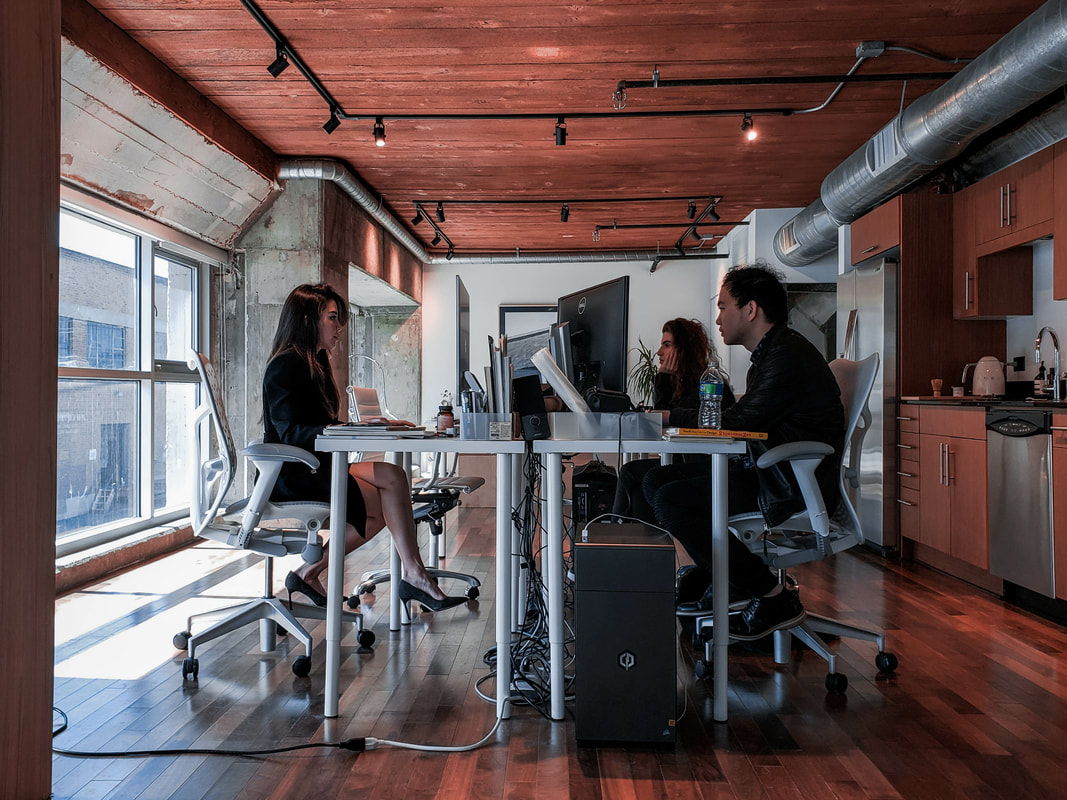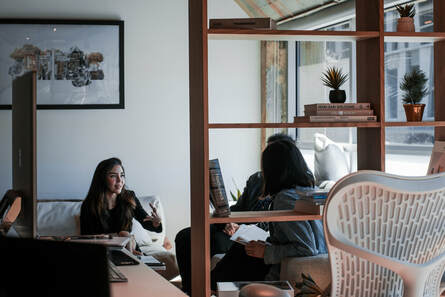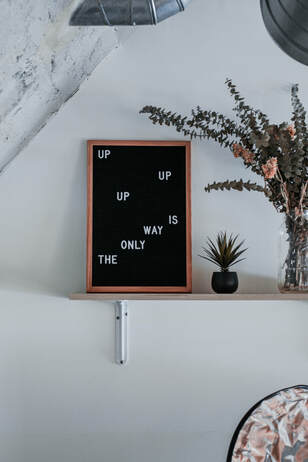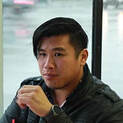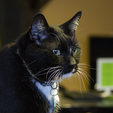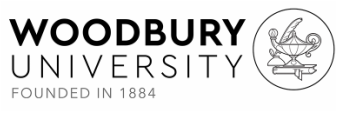- About Us
- Features
- Archive
- Videos
- The Secret success of Elmer Street
- Flying High From Below: LA's Fernando Martin
- Lip Candy
- Wafa Jaffal & her journey in Post Production!
- Guide to making a delicious arepas for your meal by Adolfo Can
- Waterworld
- Khanh's Kitchen
- From Las Vegas to LA
- Lighting the World Around Us: An Interview with Angela Gundelfinger
- Eating Disorder Healthcare: Mishna Erana Hernandez
- Meet Our New Staff!
- Meet Carlos Chavez!
- Meet Nicole Favors
- Meet David Petrosyan
- Meet Brittney Strong
- Meet Kaci Theros
- Meet Katrina Molle
- Hopping into the year of the Rabbit: Alhambra’s Lunar New Year Celebration
- 2023 Solar Decathlon
- Depop: A Circular Fashion Community
- Inside the Afro-Mexican Identity
- Meet Mimi Chao: Magnificent Creator of Mimochai
- Who’ll be the top dog? Let’s check out the annual Corgi Winter Nationals
- The Fine Line That Connects Skincare to Culture: Asian Skincare Routines
- One Of The Key Ways To Protect The Oceans Is To Rethink What We Are Doing On Land
- The Fine Line That Connects Skincare to Culture: Asian Skincare Routines
- Growing Up With a Mixed Family Made Me Confident in Being Afro-Latina
- The Benefits of Shopping At Your Local Farmers’ Market
- Discovering Voice: An Interview With Nicole Favors
- Short Form: New Creative Producing Track At Woodbury University
- Housing Crisis in Los Angeles
- How Minimalism Can Benefit Your Life as a Student
- "Insights from Fashion Marketing Chair and Forecasting Expert Wendy Bendoni on the Evolving Landscape of Fashion Consumption and Sustainability"
- The Gun Violence Issue in America
- From the Court to Console: An Interview With Tim Parham
|
From the flourishing and creative streets of the Arts District, Only Way Is Up Design’s office is a streamlined space of design filled with custom made furniture; including their Caustics chair that was previously exhibited in Paris design week. The sun pours into their bright, industrial space illuminating a framed rendered section from their thesis project “6AM.” Their bookshelves and tables lend a clue to some of their points of inspiration with Japanese design and architecture books scattered among their current work.
Only Way Is Up Design or OWIU-a phonetic pronunciation-was started by Amanda Gunawan and Joel Wong in Los Angeles. Both designers were raised in Singapore and received their bachelor’s degree in architecture from Southern California Institute of Architecture (SCI-Arc) with the merit undergraduate thesis award. Their designs and services encompass product design and manufacturing, architectural visualization, branding, and content creation. |
What made you want to start your own company-was there a specific moment or event?
“We worked right after our graduation from sci-arc at morphosis architects with Thom Mayne. During that period, and to our surprise, we received a lot of traction from the honorable mention of our Caustics Chair submission in the eVolo 2016 VMODERN furniture design competition. We were asked to exhibit our piece at Paris design week which began taking up a lot of our time as we had to make necessary adjustments and travel quite a bit, while still working full time at morphosis. That, among other reasons propelled our decision to leave. We felt that it was now or never. We’re young, still full of energy, established a solid network, and was part of a community that could help cultivate our success.
“We worked right after our graduation from sci-arc at morphosis architects with Thom Mayne. During that period, and to our surprise, we received a lot of traction from the honorable mention of our Caustics Chair submission in the eVolo 2016 VMODERN furniture design competition. We were asked to exhibit our piece at Paris design week which began taking up a lot of our time as we had to make necessary adjustments and travel quite a bit, while still working full time at morphosis. That, among other reasons propelled our decision to leave. We felt that it was now or never. We’re young, still full of energy, established a solid network, and was part of a community that could help cultivate our success.
|
How did your time at Morphosis architects influence your architectural philosophies and ideas? Have they changed from that experience?
“Our viewpoint on architecture absolutely changed from the time we spent there. We learnt and enjoyed ourselves very much. Morphosis continuously serves as a source of inspiration for us. We saw that architecture can be both a creative and supportive environment. The workload there is extremely intense, there’s constantly so much information and knowledge circulating. We were surrounded by the best of the best. When you’re surrounded by this high a caliber of expertise, you learn a lot faster. Everyone had responsibilities both big and small. Having to juggle working alone and together really helped bring the team together and we carry that philosophy as we embark on our own practice. As long as you have the same philosophy and you believe in our agenda, then you’re part of the team, there’s no such thing as hierarchies, we’re all in this together. Let’s just go all in.” What are OWIU’s design and thought process?
“It’s important to us to always be immersed in culture. As architects, it’s crucial to be connected to society and the contemporary. Ultimately, you're designing for people and this high level of empathy in understanding each stakeholder is absolutely essential. In OWIU, we’re very true to our name. Styles will always change but we believe if we had improved the space in a forward trajectory, then we have done our jobs. We always make sure we are on the forefront of technology and are always learning and upgrading ourselves. With clients, we want to ensure our design and architecture can add value. We focus on our strengths, which is to help the client realize a space’s potential. That’s our first pitch and then will continue to ensure that our visions align with the client. As a practice, we are also drawn to creative energy and what people bring to the table. We want to be surrounded by knowledge-thirsty, technologically-savvy people who genuinely want to make an impact in architecture and whose views align with our philosophy.” |
"As architects, it’s crucial to be connected to society and the contemporary. Ultimately, you're designing for people and this high level of empathy in understanding each stakeholder is absolutely essential." |
Where do you look towards for inspiration and design beliefs?
“Our thesis project, “6AM” embodied a lot of concepts we believed in, and formally people are always daunted by it. We’ve always looked towards the Metabolist and Futurist movement. We have immense respect for Japanese architecture. Arata Isozaki was recently awarded the Pritzker Architecture Prize and designed the Museum of Contemporary Art here in L.A. Often, architecture and inspiration can be taken for granted when it’s all around you. We don’t believe in one type of architecture. The definition of style is constantly changing, and it’s about not type casting or molding yourself to a design. It’s always a process; you can look at an architect and the final product you see is never what they started off with.”
What does it mean to balance the business and creative side of Architecture? Are there any challenges you immediately faced?
“When we started OWIU, both of us had no business background. However, we’re slowly figuring out how to structure the company and economics. In the beginning, trying to organize and manage the office was quite difficult. It’s completely different from freelancing. With freelance, you receive a job, get paid, and the money flows in. Now with our own business, you need a clear structure for constant revenue flow, where the money is being distributed, maintaining long-term client relationships, and the type of projects we want to take on. It’s about choosing your battles and knowing the risk behind a project. You must question if it’s for the money, the portfolio, and being honest if it truly falls in line with the work you want to present and align yourself with.
One of the most difficult parts is proving yourself. There was one time we were working to get a big job and all they did was question us based on our size and if we can handle the responsibilities. We had to really convince them in our capabilities and ability to grow. OWIU is up against larger, more established firms who have a track record of performing well. We’re trying to break the barrier. We understand that everybody is entitled to their lack of trust, so we make sure to go out of our way to prove ourselves and when we pull through it becomes a long-term relationship.”
As graduated students from SCI-Arc with the prestigious merit undergraduate thesis awards, what is your advice to students on integrating feedback into their work?
“At school you can slowly understand the different characteristics of designers and their viewpoints. Thom Mayne is extremely charismatic and can sell an idea very well. It’s a give and take to maintain what you believe in for your work. The key is balance and standing firm in what you believe but also knowing when to be flexible. At the end of the day, you need to understand that everything has a solution.”
“Our thesis project, “6AM” embodied a lot of concepts we believed in, and formally people are always daunted by it. We’ve always looked towards the Metabolist and Futurist movement. We have immense respect for Japanese architecture. Arata Isozaki was recently awarded the Pritzker Architecture Prize and designed the Museum of Contemporary Art here in L.A. Often, architecture and inspiration can be taken for granted when it’s all around you. We don’t believe in one type of architecture. The definition of style is constantly changing, and it’s about not type casting or molding yourself to a design. It’s always a process; you can look at an architect and the final product you see is never what they started off with.”
What does it mean to balance the business and creative side of Architecture? Are there any challenges you immediately faced?
“When we started OWIU, both of us had no business background. However, we’re slowly figuring out how to structure the company and economics. In the beginning, trying to organize and manage the office was quite difficult. It’s completely different from freelancing. With freelance, you receive a job, get paid, and the money flows in. Now with our own business, you need a clear structure for constant revenue flow, where the money is being distributed, maintaining long-term client relationships, and the type of projects we want to take on. It’s about choosing your battles and knowing the risk behind a project. You must question if it’s for the money, the portfolio, and being honest if it truly falls in line with the work you want to present and align yourself with.
One of the most difficult parts is proving yourself. There was one time we were working to get a big job and all they did was question us based on our size and if we can handle the responsibilities. We had to really convince them in our capabilities and ability to grow. OWIU is up against larger, more established firms who have a track record of performing well. We’re trying to break the barrier. We understand that everybody is entitled to their lack of trust, so we make sure to go out of our way to prove ourselves and when we pull through it becomes a long-term relationship.”
As graduated students from SCI-Arc with the prestigious merit undergraduate thesis awards, what is your advice to students on integrating feedback into their work?
“At school you can slowly understand the different characteristics of designers and their viewpoints. Thom Mayne is extremely charismatic and can sell an idea very well. It’s a give and take to maintain what you believe in for your work. The key is balance and standing firm in what you believe but also knowing when to be flexible. At the end of the day, you need to understand that everything has a solution.”
"At the end of the day, you need to understand that everything has a solution.”
|
From your interview in The Glossary, you mentioned Instagram as the easiest and most universal way to share design; How does social media change the public perception of architecture?
“People think architecture is an esoteric discipline. Whenever they hear that you’re an architect, it’s almost like they can't engage in a discussion with you. They think that you have no interest in what they’re about to say or what they do. Architecture is a culmination of everything, and SCI-Arc for us made that clear in their curriculum. Social Media is a universal platform that is a gateway for our generation. It’s almost easier to network through social media than to give a business card. Instagram allows us to speak about our work, engage in conversation, and have people feel less intimidated about the topic; it opens doors to a wider spectrum of the public. |
How do you see OWIU growing?
“We’re interested in doing designs in the food and beverage hospitality route for a lot of creative freedom. We also find it important to maintain our conceptual work to inspire students and engage discussions on architecture. To create a conversation at all times is very important to us. We’re open to teaching people and proliferating our work. We’re not private when it comes to technique and are strong advocates of sharing. It’s part of our name to only take strides forward and upwards. OWIU isn’t afraid of artificial intelligence or copycats if it means that our ideas evolve. There isn’t any loss in it because if you're confident in the work you do, there’s no reason to be afraid of other people possessing the same skills. Conversation in design will constantly bounce back to you and can allow you to be continuously curious.”
“We’re interested in doing designs in the food and beverage hospitality route for a lot of creative freedom. We also find it important to maintain our conceptual work to inspire students and engage discussions on architecture. To create a conversation at all times is very important to us. We’re open to teaching people and proliferating our work. We’re not private when it comes to technique and are strong advocates of sharing. It’s part of our name to only take strides forward and upwards. OWIU isn’t afraid of artificial intelligence or copycats if it means that our ideas evolve. There isn’t any loss in it because if you're confident in the work you do, there’s no reason to be afraid of other people possessing the same skills. Conversation in design will constantly bounce back to you and can allow you to be continuously curious.”
|
What are some ways that we can all become more aware and appreciate the architecture around us?
“Design appreciation is universal. We can all walk into a space and go “I really like this.” Taste is preferential. To understand and appreciate architecture you need to be able to understand from the perspective of “why’s.” For example, Philharmonie De Paris by Jean Nouvel exemplifies revolutionary construction. To see the building and understand the design is appreciating the difficulty in craft and construction to pull it off. There’s also an appreciation for history with architecture. The building had to be thought of and applied in terms of economics, social standing, time, labor and resources. It's valid to question why so much effort was put into a building and then you should be able to appreciate it.” As the afternoon winds down, the familiar smell of coffee fills the air to fuel the designers. The computer keyboards and mouse’s click to create a rhythm in their well-crafted office. Amanda and Joel continue to work on their architectural visualizations and share their process on social media to serve as platforms for community engagement and conceptual work. To view OWIU’s work visit: http://www.owiu-design.com. |
“To create a conversation at all times is very important to us.” |
Links |
7500 |
|
